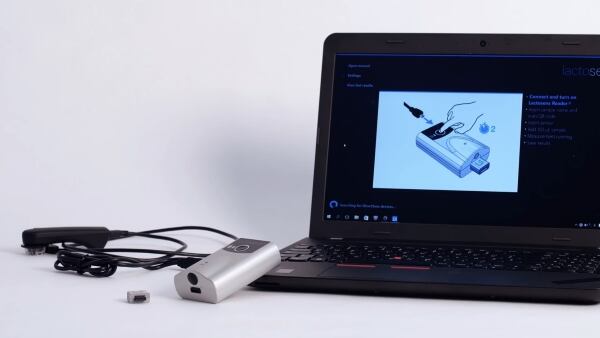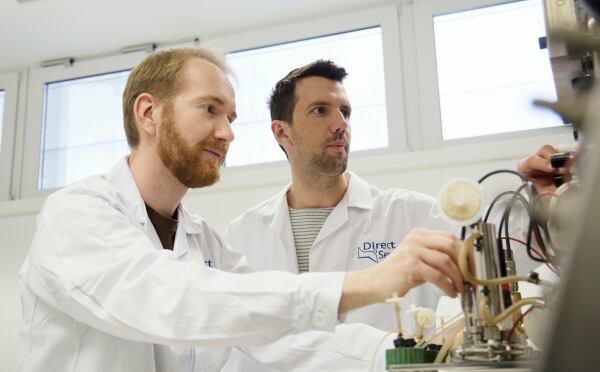The amount has dropped from 0.1g/ml to the actual scientifically-encouraged standard of 0.01g/ml – even if the scientific opinion of the EFSA (European Food Safety Authority) is: “A precise threshold for lactose intake below which adverse effects are not elicited cannot be given.”
There are still dairy products on the market serving just the 0.1g/ml threshold, however, in future, dairy markets will move toward 0.01g/ml.
This readjustment helps people with severe lactose intolerance, but means a greater challenge for dairies, as methods for precisely controlling and verifying a 0.01% lactose threshold – like ion chromatography or high-performance liquid chromatography - are quite laborious, slow and expensive, especially when not executed in-house.
Also, many current devices are not sensitive enough to detect a 0.01% lactose threshold.

Enzymatic biosensor
Austrian company DirectSens GmbH has launched LactoSens 0.01%, a third-generation biosensor using a lactose-specific high-selective enzyme patented in 2015.
The company said the highly-precise enzymatic method is fast, accurate and traceable, specific, easy to use, flexible and cost saving.
The LactoSens 0.01% test – recently validated against HPLC - is a direct assay on a biochip that specifically measures lactose in minutes in milk and dairy products including yogurt, sour cream, cream cheese and mozzarella.
How it works
DirectSens product/innovation manager Dr Josef Michael Kienböck told DairyReporter 100μl of the diluted sample is applied to the disposable test strip so the circular sensor area carrying the immobilized enzyme is completely covered with sample.
The electrochemical measurement is based on amperometry: During the measurement, lactose in the sample is oxidized by the highly specific, genetically optimized enzyme cellobiose dehydrogenase (CDH) to lactobionic acid and the electrons resulting from the oxidation are captured by the potential-active LactoSens reader.
The software transmits the analytical signal according to the calibration function into a lactose concentration. No manual calibration is necessary because the calibration function is automatically taken from the QR-code indicated on each pack of single test strip.
The results can be saved or exported to an Excel worksheet.
Certified detection
Kienböck said the NordVal International Institute of the Technical University of Denmark has confirmed and certified the LactoSens biosensor - in the sensitive range between 1% and 0.008% - as equivalent to the previously-used reference HPLC method.
In the study, in two ISO 17025 accredited laboratories the LactoSens biosensor was validated against the HPLC method. The NordVal validation study classified the LactoSens biosensor as the only rapid lactose test that performs satisfactorily for lactose levels of 0.008% and above with equivalent results to the reference HPLC method.

LactoSens benefits
Kienböck noted that as the measurement process is completed in minutes, fast product release saves both labor time and money.
The easy-to-use method also makes it possible to document low lactose or lactose-free claims for every batch produced, and is specific as there is no interference from other sugars, such as glucose or galactose.
Kienböck added as there is no initial preparation and calibration of necessary, the portable device connects to any notebook.
Jes Jensen, director of testing and equipment at Chr Hansen, said, “LactoSens is ideal for both process control and product release in the dairy industries. 'It is the fastest and easiest method available, revolutionizing the way in which the dairy industry analyses lactose.”
